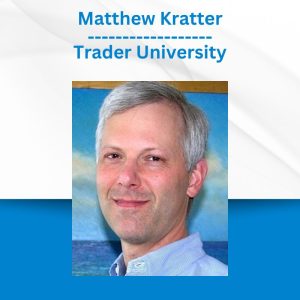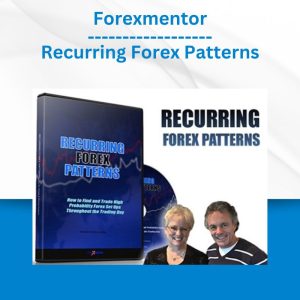*** Proof of Product ***
Exploring the Essential Features of “David Meyer – Experiencing Hubble: Exploring the Milky Way”
Experiencing Hubble: Exploring the Milky Way
Hitch a ride on the Hubble Space Telescope and enjoy eye-opening and jaw-dropping views of the galaxy we call home.
LECTURE (12)
01:The Unseen Face of Our Spiral Galaxy
Your Hubble Space Telescope tour of the Milky Way galaxy begins with an overview of the spectacular images you will encounter in the course. Dr. Meyer notes that our location in the disk of the Milky Way makes it difficult to discern the galaxy’s large-scale structure. But by studying clues both near and far, astronomers have identified another spiral galaxy that is a close match to ours.
02:Viewing the Galaxy through a Comet
Focus on Comet ISON as it passes inside the orbit of Jupiter, just a few light-minutes from Earth. In the same frame, Hubble reveals additional distant objects in our galaxy, but also galaxies billions of light years distant—a striking case of extreme depth of field. Discover that comets are icy leftovers from the formation of the solar system, and they populate the Oort Cloud, which extends partway to the nearest star, Proxima Centauri.
03:A Cloud of Stardust: The Horsehead Nebula
Your stop in this lecture is the famous Horsehead Nebula—a two-light-year appendage of a vast molecular cloud composed of gas and dust. Dr. Meyer discusses the physical processes that turn these clouds into stellar nurseries. The horsehead shape is the accidental outcome of ultraviolet radiation pouring from a nearby young star, which acts like a blowtorch on the dark nebular material.
04:A Star Awakens: The Jets of Herbig-Haro 24
Described in a Hubble press release as a “cosmic, double-bladed lightsaber,” Herbig-Haro 24 is a pair of energetic jets emerging from the polar regions of a newborn star. Such jets are a common feature in star-forming regions. Their high speed and tendency to form in pulses allow long-lived observatories like Hubble to show them in action via time-lapse movies made over several years.
05:A Star Cluster Blossoms: Westerlund 2
Visit some of the hottest, most luminous stars in the galaxy, the young cluster known as Westerlund 2. Compare this group with other star clusters, using the Hertzsprung-Russell diagram to grasp what color and luminosity say about stellar evolution. Drawing on this information, predict the future of Westerlund 2, and reflect on the cluster where the Sun probably formed 4.6 billion years ago.
06:An Interstellar Cavity: The Bubble Nebula
Focus on the delicate Bubble Nebula, a sphere of gas 8 light-years across, which is being inflated by the strong wind from a hot, young star 45 times more massive than the Sun. Many such structures have been recorded by Hubble, vividly showing the process of mass loss by stars—sometimes gradually, sometimes explosively—which enriches space with elements heavier than helium.
07:The Interstellar Echo of a Variable Star
In one of the most beautiful sequences ever photographed by Hubble, a ring of light radiates through a nebula—like ripples from a stone tossed in a pond. This view is the light echo of a Cepheid variable star, seen in time-lapse as it reverberates at light speed through the surrounding dust cloud. Learn how the properties of Cepheids are the key to measuring distances in our galactic neighborhood.
08:Tracing the Veil of a Prehistoric Supernova
Thousands of years ago, light from a stellar explosion in the constellation Cygnus reached Earth. Ever since, remnants of that supernova event have been speeding apart, until they now form a ghostly feature called the Veil Nebula. View Hubble and other telescopic images to learn how supernovae shape the elemental composition of the galaxy, making possible rocky planets such as Earth.
09:The Stellar Vortex at the Galactic Center
Begin a new section of the course that investigates the large-scale structure of the Milky Way. In this lecture, journey to the galactic center, which Hubble shows to be populated by millions of densely packed stars, orbiting a black hole with the mass of 4 million suns. Study other examples of supermassive black holes in galactic cores and theories on how they form.
10:The Galactic Halo’s Largest Star Cluster
Over a hundred globular star clusters are scattered like sparkling snow globes in a halo around the Milky Way. Each is composed of hundreds of thousands to millions of stars. Explore Hubble’s views of the inner regions of these clusters, learning their connection to the early epoch of star formation in the universe. Some of the clusters are remnants of dwarf galaxies, captured by the Milky Way.
11:Satellite Galaxies: The Magellanic Clouds
Zero in on the largest of the Milky Way’s satellite galaxies: the Large and Small Magellanic Clouds, known as LMC and SMC. View Hubble’s images of the Tarantula Nebula with its brilliant cluster R136 in the LMC, and NGC 602 in the SMC (often voted as one of the top 10 Hubble photos of all time). Trace the likely history of the Magellanic Clouds and their link to the origin of the Milky Way.
12:The Future of the Milky Way
Finish your tour of the Milky Way by traveling to the nearest large galaxy, Andromeda, seeing it in a dazzling composite of 7,400 Hubble exposures in 411 star fields. Chart the fate of the Milky Way as Andromeda speeds toward it for a collision billions of years from now. Hubble’s views of other galactic collisions show what to expect from this surprisingly graceful merger of two giant galaxies.
DETAILS
Overview
Explore the Milky Way galaxy with the Hubble Space Telescope and a prominent astronomer.
About
David M. Meyer
I have found no better way to communicate the joy of discovery in astronomy than through the beautiful cosmic images obtained by the Hubble Space Telescope.
ALMA MATER
University of California, Los Angeles
INSTITUTION
Northwestern University
Dr. David M. Meyer is Professor of Physics and Astronomy at Northwestern University, where he is also Director of the Dearborn Observatory and Co-Director of the Center for Interdisciplinary Exploration and Research in Astrophysics. He earned his B.S. in Astrophysics from the University of Wisconsin, and his M.A. and Ph.D. in Astronomy from the University of California, Los Angeles. He continued his studies as a Robert R. McCormick Postdoctoral Fellow at the University of Chicago’s Enrico Fermi Institute before joining the Northwestern faculty. Professor Meyer’s research focuses on the spectroscopic study of interstellar and extragalactic gas clouds-work carried out over the past 15 years with the help of the Hubble Space Telescope. Along with his collaborators, Professor Meyer has conducted 20 research projects with Hubble, resulting in 25 peer-reviewed publications. He has also served five times on the committee that annually selects the most deserving proposals for Hubble observing time. During his career at Northwestern, Professor Meyer has specialized in designing and teaching introductory undergraduate courses in astronomy, cosmology, and astro-biology for non-science majors. His many teaching awards include the Charles Deering McCormick Professorship of Teaching Excellence, Northwestern’s highest teaching honor. Beyond campus, Professor Meyer has delivered popular talks on Hubble to young and old in settings as far-flung as a transatlantic crossing.
Please see the full list of alternative group-buy courses available here: https://lunacourse.com/shop/









